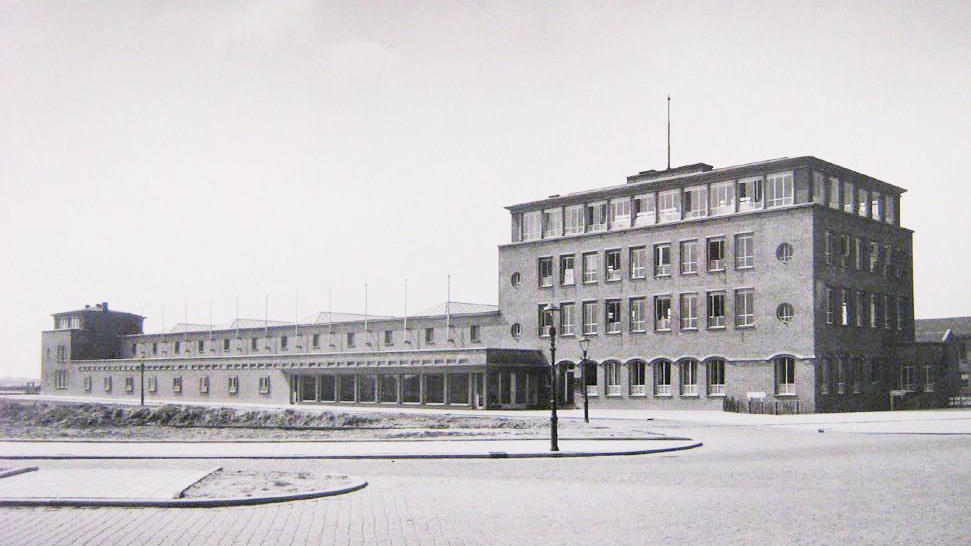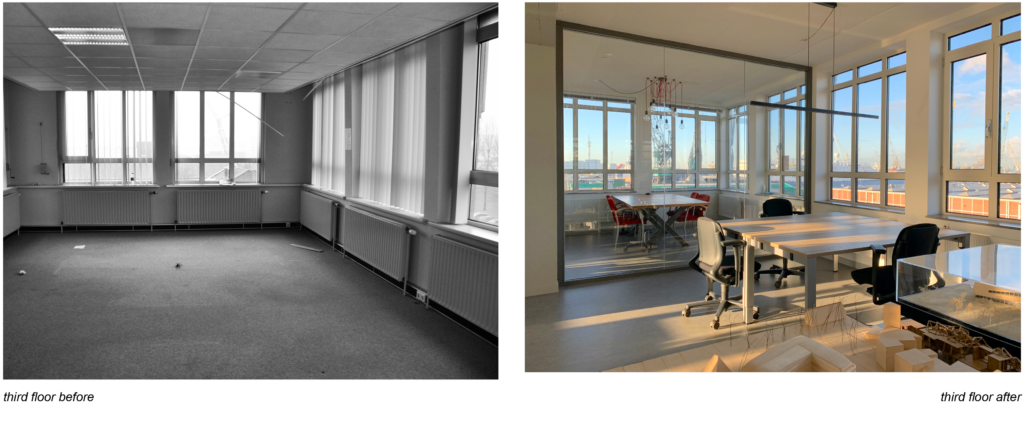
Co-working spaces in a former office building
Rotterdam, NL | 2012 – 2021 | Completed renovation | co-working, collective amenities, heritage building | transformation
Nomination Rotterdam Architecture Prize 2013
The former building of the N.V. Handelscompagnie (Trading Company) is located at the pivot point of the Sluisjesdijkpier and the Waalhaven Oostzijde, as a gatekeeper between the Charlois neighbourhood and the Waalhaven harbour district. The complex designed by Ad van der Steur was built in 1946.
More remarkable buildings in the city of Rotterdam are designed by this architect, such as the ventilation buildings of the Maastunnel, Museum Boijmans and the Oogziekenhuis (Eye Hospital).

The building complex of in total 5200 m2 consists of three parts: an office building, a janitors house and a workshop, with only the workshop still to be developed. The ambition is to require this 4000 m2 space in the future as well, to develop a learning and working place for crafts and innovation.
After a period of vacancy and decay, the office building was redeveloped with the support of the Inner City Harbour Development Fund for Innovation and Economy (SOFIE). Since 2012, the building has been developed and exploited by a foundation (Stichting Handelscompagnie Sluisjesdijk).
The starting point for the transformation was the preservation of the iconic appearance of the building and the characteristics of the facade. The use of relatively simple interventions could achieve the desired results necessary for a qualitative office building.

Today the office building houses multiple organizations in the creative and technological sector. In addition to workspaces, the ground floor of the building provides collective spaces such as meeting and presentation rooms, a professional kitchen and a bar. These facilities are accessible for tenants as well as organizations and residents from the neighbourhood and city.

With minimal interventions the ground floor is transformed into an open, fluid space. The corridor is dismissed and collective spaces are connected. The original structure is made visible and light can enter the entire floor.

The former industrial heritage is transformed step by step; once suitable tenants were found, another floor was renovated. The renovation work on site is executed with people who have a distance to the labour market, with the aim of getting them to permanent employment.

The redesign of the outdoor space in front of the building was developed within a design competition for young designers.

Feature in Open Rotterdam – episode of ‘Pioniersplekken’ (2017) :
